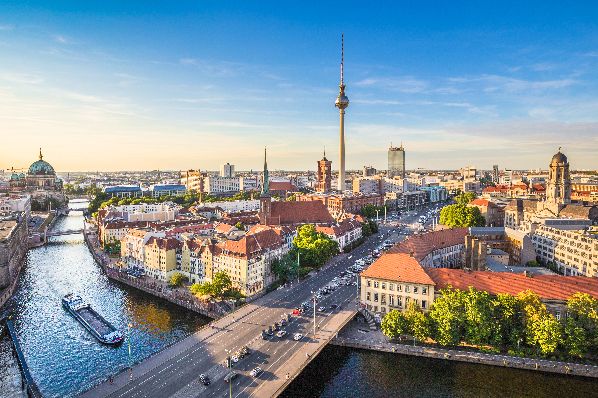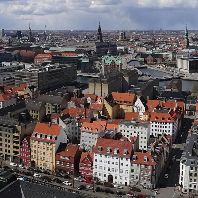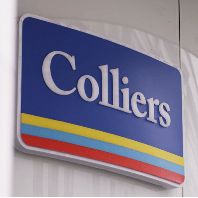The study "GfK Retail Turnover 2016" is a prognosis of point-of-sale turn-over in Germany. According to the new study, Germany's 2016 stationary retail turnover will amount to €411.3bn. GfK's retail experts anticipate that stationary retail will experience a slight nominal increase of 0.8% compared to the previous year.
Regional distribution of turnover in Germany
Germany's most populated districts continue to generate the most turnover. Metropolitan areas such as Berlin, Hamburg and Munich top the turnover rankings:
Top 10 districts according to total retail turnover
|
rank |
urban district / |
inhabitants |
retail turnover |
share as a % of total stationary retail turnover |
|
1 |
Berlin UD |
3,469,849 |
18,033.0 |
4.38% |
|
2 |
Hamburg UD |
1,762,791 |
11,016.5 |
2.68% |
|
3 |
Munich UD |
1,429,584 |
10,662.1 |
2.59% |
|
4 |
Cologne UD |
1,046,680 |
7,026.5 |
1.71% |
|
5 |
Hannover region |
1,128,037 |
6,600.4 |
1.60% |
|
6 |
Frankfurt am Main UD |
717,624 |
4,235.5 |
1.03% |
|
7 |
Düsseldorf UD |
604,527 |
4,183.3 |
1.02% |
|
8 |
Stuttgart UD |
612,441 |
4,165.6 |
1.01% |
|
9 |
Nuremberg UD |
501,072 |
3,529.1 |
0.86% |
|
10 |
Dortmund UD |
580.511 |
3,419.7 |
0.83% |
|
source: GfK Retail Turnover Germany 2016; UD = urban district; RD = rural district |
||||
The top 10 districts together comprise 17.7% of Germany's total stationary retail turnover. This is a further increase over the figure for previous years. Strong retail locations are thus exerting an increased drawing power on consumers.
Retail sites in large cities have an excellent chance to achieve optimal market presence, strong demand and high turnover volume. But there is already an excess offering in these locations for many segments and target groups, in addition to a lack of suitable retail real estate.
Given Germany's saturated market, select mid-sized cities continue to grow in importance as sites of interest to retailers interested in optimizing or expanding their networks. Mid-sized cities that offer a wide range of services for the surrounding area enjoy per-capita turnover volumes of €5,065, which is twice that of the national average.
Top 10 districts according to per-capita retail turnover
|
rank |
urban district / |
inhabitants |
retail turnover |
retail turnover |
|
1 |
Straubing UD |
46,027 |
10,457 |
206.4 |
|
2 |
Passau UD |
49,952 |
10,415 |
205.6 |
|
3 |
Würzburg UD |
124,219 |
10,270 |
202.8 |
|
4 |
Weiden i.d.OPf. UD |
41,817 |
10,032 |
198.0 |
|
5 |
Schweinfurt UD |
51,610 |
9,715 |
191.8 |
|
6 |
Rosenheim UD |
60,889 |
9,482 |
187.2 |
|
7 |
Landshut UD |
67,509 |
9,300 |
183.6 |
|
8 |
Kempten (Allgäu) UD |
65,624 |
9,178 |
181.2 |
|
9 |
Trier UD |
108,472 |
9,067 |
179.0 |
|
10 |
Regensburg UD |
142,292 |
8,860 |
174.9 |
|
source: GfK Retail Turnover Germany 2016; UD = urban district; RD = rural district ; * 100 = national average |
||||
Note: The per inhabitant values comprise a purely mathematical benchmark, because retail at these respective locations is by no means driven only by local inhabitants. Insight into the drawing power of the regions in question can be gained by correlating retail turnover with population size.
About the study
GfK Retail Turnover reveals the regional distribution of stationary retail turnover. In contrast to GfK Retail Purchasing Power, which is calculated at consumers’ places of residence, GfK Retail Turnover is calculated at the locations at which sales are made. GfK Retail Turnover is defined as the turnover of the retail trade, excluding motor vehicle and fuel sales as well as mail-order retail, but including retail-related turnover from bakeries, confectionaries and butchers.
GfK annually calculates GfK Retail Turnover for every regional level as a total sum as well as per inhabitant in euros and as an index (German average = 100). These calculations are carried out for all of Germany's urban and rural districts, postcodes and municipalities with more than 10,000 inhabitants.















